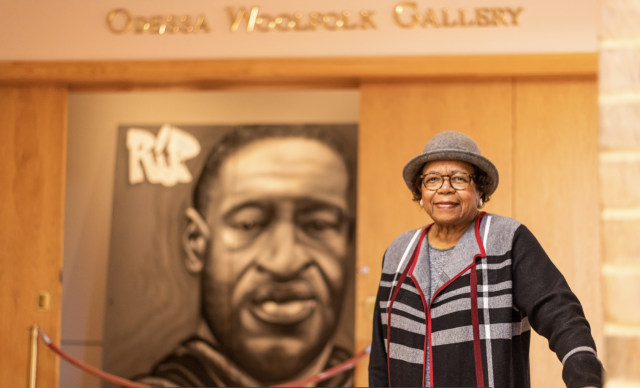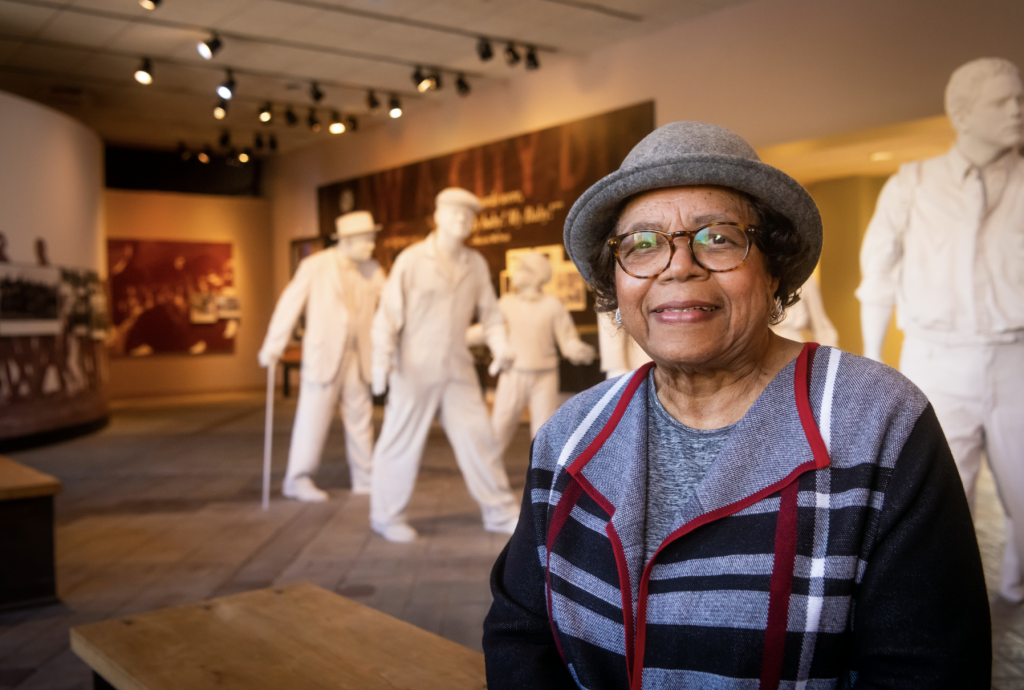
By Javacia Harris Bowser
For The Birmingham Times
When former Birmingham Mayor Richard Arrington Jr. assembled a 21-member task force to spearhead the creation of the Birmingham Civil Rights Institute in 1986, he tapped Woolfolk to lead the team. Her experience in education and public policy made her the perfect person for the job.
Moreover, she had lived through the time when segregation and discrimination were the law of the land in Birmingham. She had memories of water hoses and growling dogs being turned on peaceful protestors and the shock and terror that ripped through the community when the bombing of the Sixteenth Street Baptist claimed the lives of four little girls.
While trying to get the project off the ground, the task force faced opposition from several groups.
“Some people said, ‘Don’t open up old wounds,’” Woolfolk recalled. Others questioned if the institute was the best use of taxpayers’ money when there were potholes to be fixed, schools that needed improving, and residents who needed better jobs and homes.
“Our response was we were advocating for all of those things,” Woolfolk said. “We were advocating for better schools, for fair employment and for fair housing.”
But they felt that for the city to be better in the future, it had to take an honest look at its past.
“We thought what we were doing had to be done,” she said. “We made the case that recognizing your past is a part of healthy growth and there’s the old saying that if you don’t remember the past, you’re doomed to repeat the worst parts of it.”
With all that she has accomplished Woolfolk is first and foremost a teacher and her goal is always to teach a lesson. There’s an Ethiopian proverb that states “She who learns teaches.” Woolfolk’s life is the epitome of this mantra.
Therefore, BCRI was to be a place of learning.
“It was to be a teaching institution,” she said. “That’s why we did not want to call it a museum. We called it an institute because we wanted it to be active and not be a mausoleum where you just put some pictures of icons of the past and forget about it and move on.”
The task force envisioned the institute being a place for reconciliation, too.
“We wanted it to be a place where all groups of people could come and get to know each other and openly discuss the issues that were separating us,” she said. “Sort of a civic back porch.”
The task force held its first meeting in spring of 1986. Four years later the group had formed a board, secured funding, and hired designers. The Birmingham Civil Rights Institute finally opened its doors in November of 1992. Today, the BCRI, which has a gallery named from Woolfolk, is an affiliate of the Smithsonian Institute and reaches more than 150,000 people each year.
Woolfolk has said often that she looks at the institute as if she were a parent seeing her children grow up. But what makes her proudest is seeing people in the Birmingham community – including those who were against the idea – embrace the institute as their own.
“Once it was built and people saw the character of it and saw the quality of it, they all started saying, ‘Look at our institute,’” Woolfolk recalled. “My proudest moments were seeing people who were hesitant in the past bring their friends, bring their families, and have their parties in our institute.”
Like any proud parent, Woolfolk is confident that the future is bright for the institute.

“Now that we’re talking about social justice on a national level, the institute is poised to be a leader and to be a place where people can learn the history, learn about reconciliation, learn about how you get different groups of people together to work on practical solutions for problems,” she said.
And organizations like the BCRI have their work cut out Woolfolk said that when she hears the words of those who reject the idea that Black people in America still deal with discrimination, she gets a feeling of déjà vu.
“When I hear their language I could close my eyes, open my ears and think I’m listening to the radio in the 60s,” she said.
Woolfolk believes that one of the best ways to prevent history from repeating itself is to teach it comprehensively – the good, bad, and the ugly.
“I’m appalled by people who say you can’t teach things that make kids feel uncomfortable,” she said. “The job of a teacher is to help kids understand the subject matter and if it’s history they have to understand the facts and they have to accept what happened in the past.”
Woolfolk doesn’t believe teachers should ever make their students feel guilty about horrific events of the past, “but they cannot cover up the facts,” she said. “You cannot sit in a room and talk about American history and ignore slavery, ignore the fact that discrimination still occurs, or that racism is baked into American history.”




